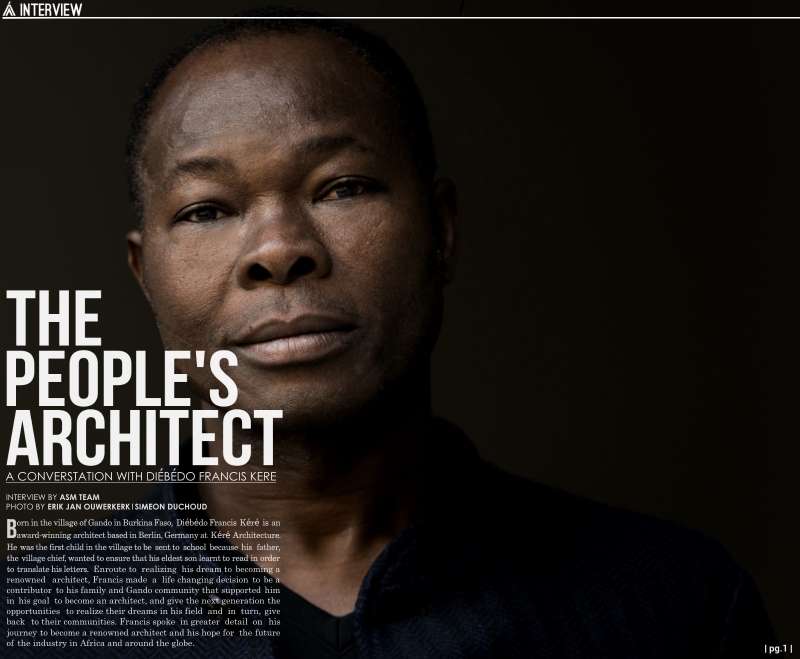
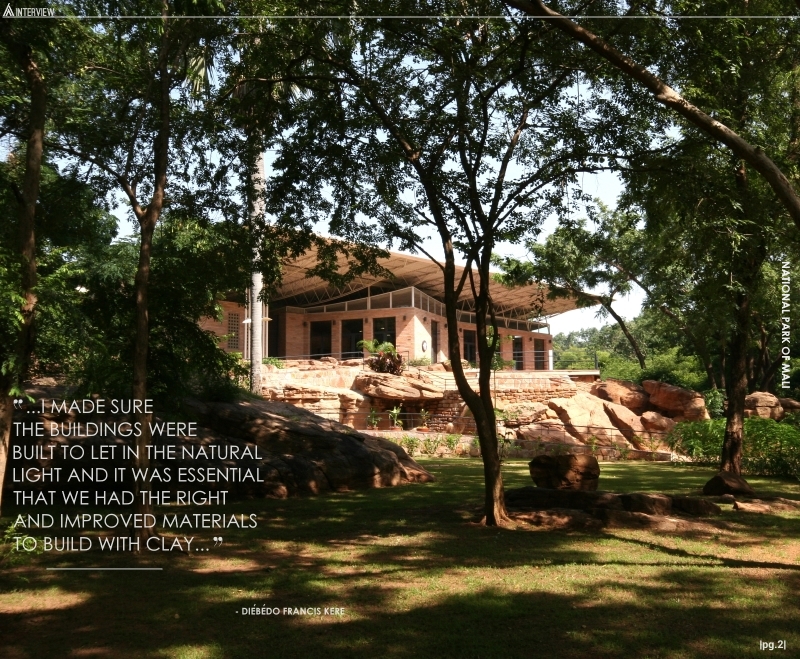
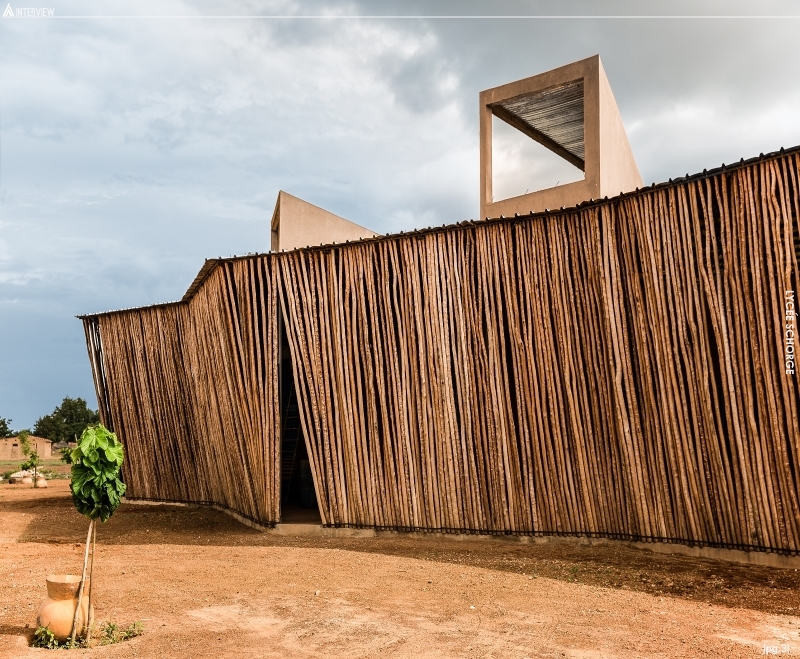
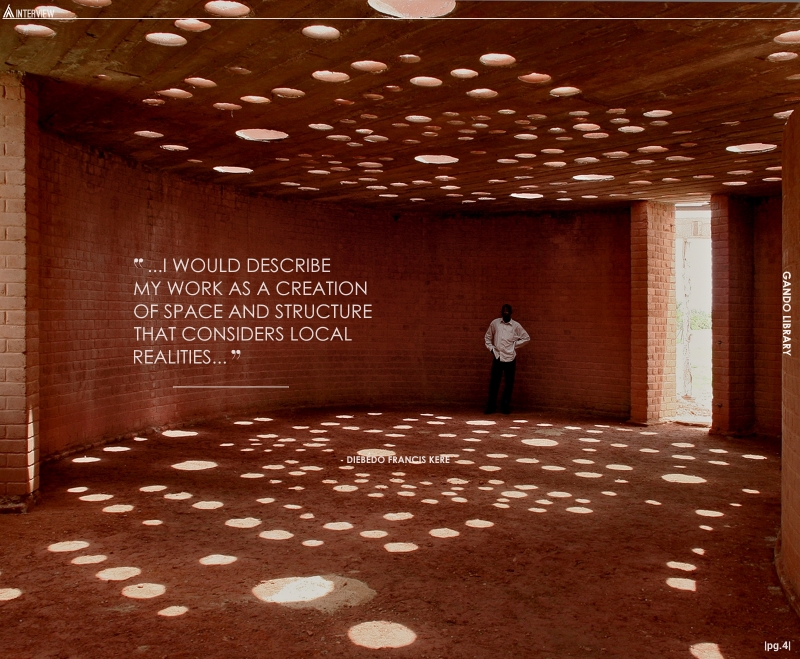
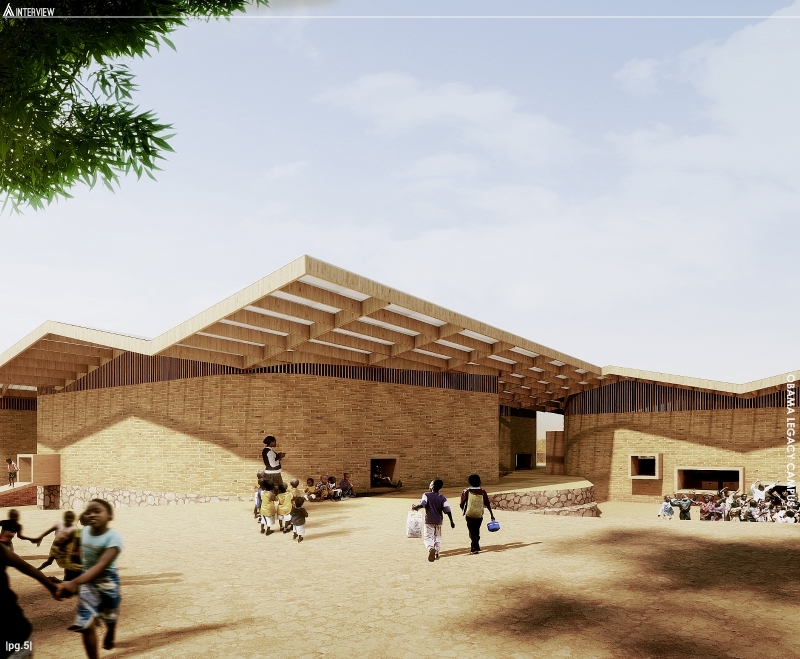
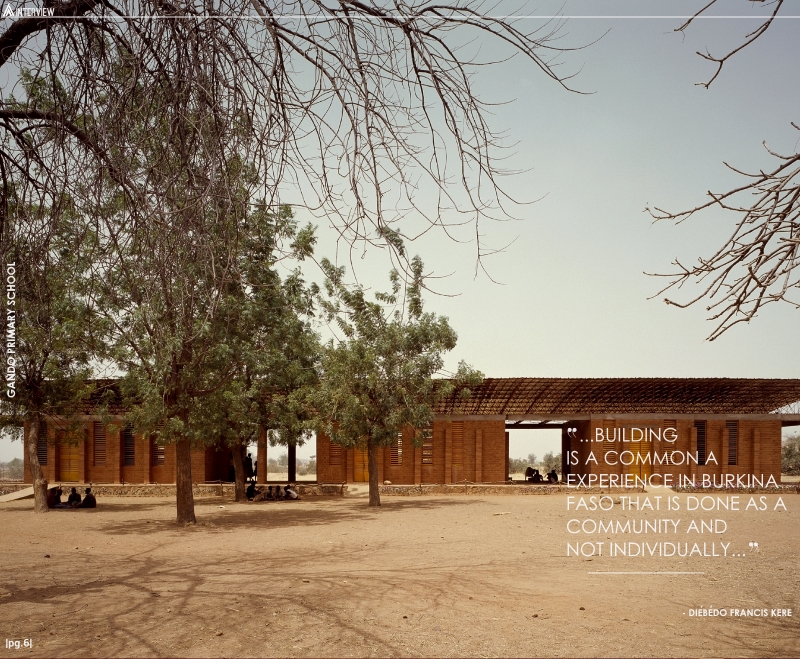
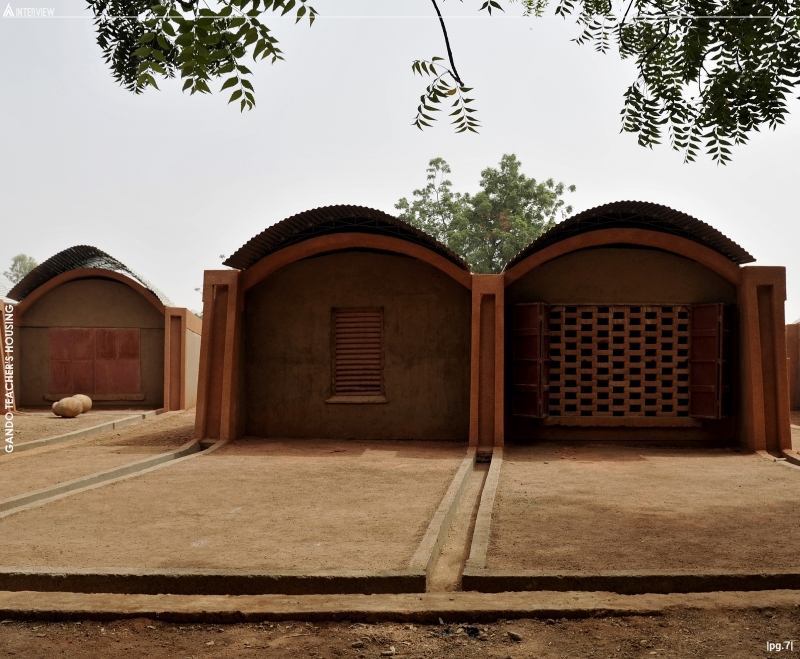
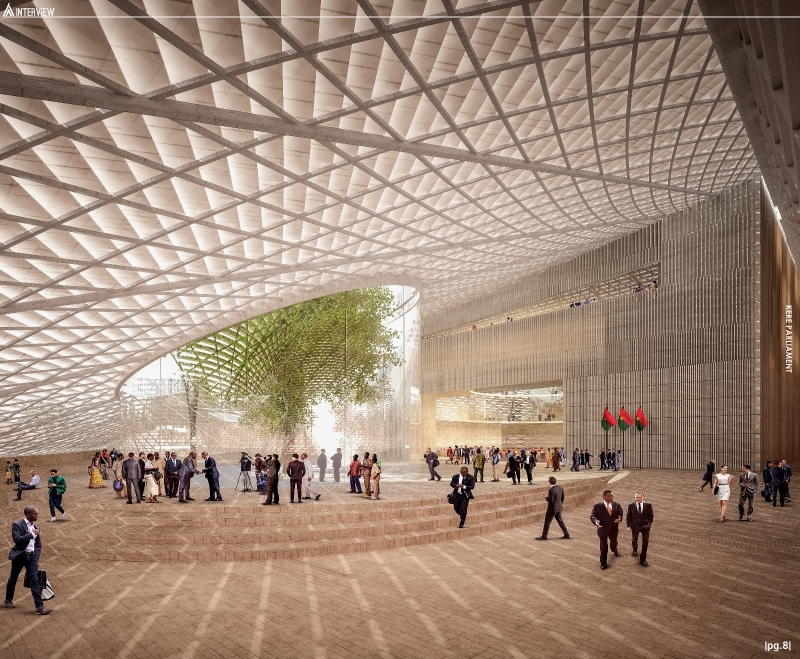
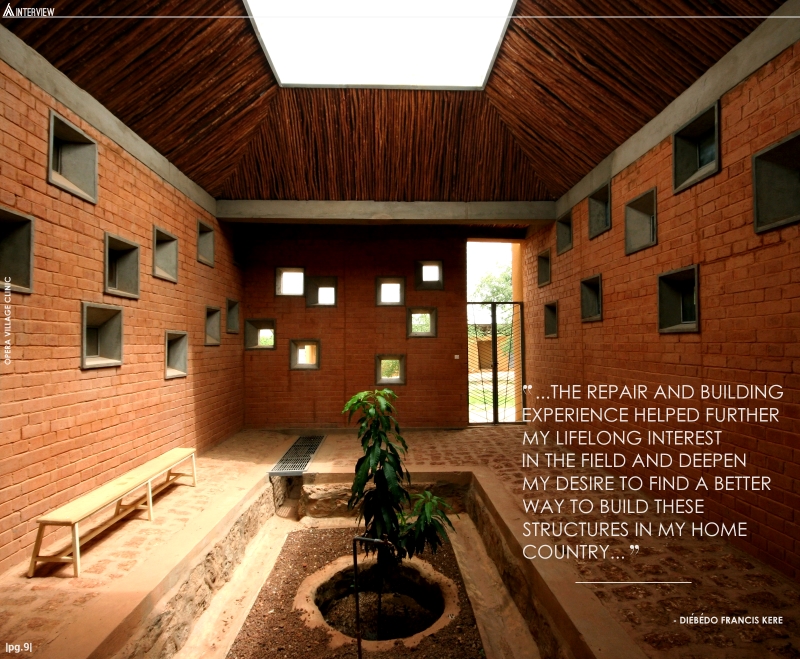
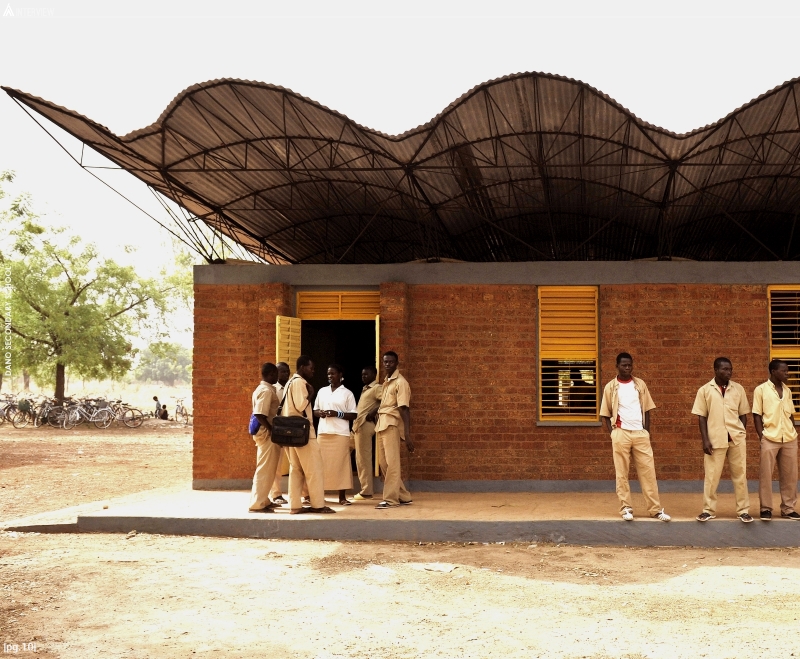
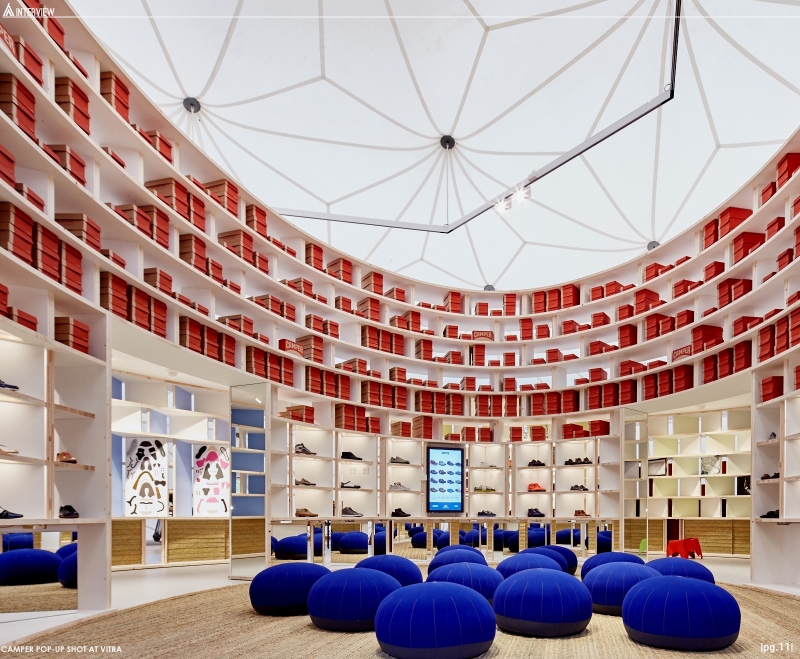
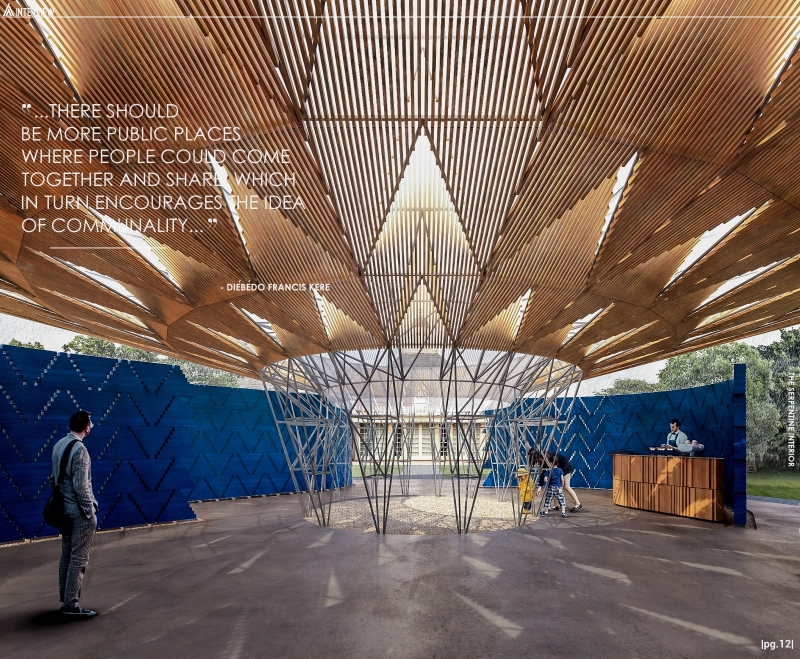












ASM: What began your interest in architecture? Was it passion developed at a young age or were you advised to get into the industry??
DFK: I was born in a little village called Gando where there was neither electricity nor access to clean drinking water. There were no schools in my village, however my father wanted me to learn to read and write; and so, at the age of seven, I found myself in a city with an extended family far away from home, which made communication with my family in the village impossible. Though I finally got the opportunity to get an education, I sat with over one hundred kids in a dark hot classroom with low seats. I made a promise to make things better by using the skills that I would attain to build schools because I realized that the young ones in my village needed better opportunities. While I went to school, I assisted my uncle in building and repairing homes - it was an extremely laborious renovation work. I always thought it was complicated having to revisit the same fixing and painting issues every year and wondered what I would do to make it better. The repair and building experience helped further my lifelong interest in the field and deepen my desire to find a better way to build these structures in my home country. I wanted to inspire people by taking on this challenge; and I was lucky to get a scholarship to continue my education in Germany to realize my dream.
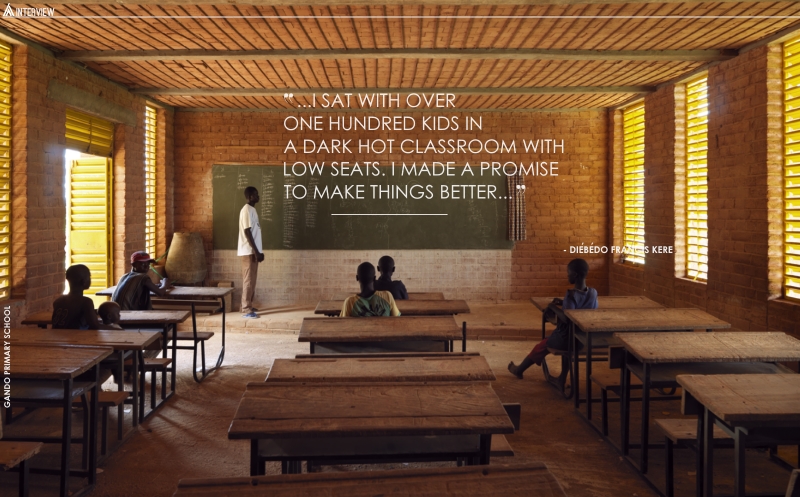
ASM: Speaking of inspiration, were there any architectural principles that you learned as you got into the field and went back to Gando to begin the building process?
DFK: Yes. As I began the building process, I learned I had to create and build structures that were technical yet simple. Having big canopies strong enough to withstand the rain and sun was a necessity; and I had to ensure that there was natural ventilation getting into the rooms due to the high expense in buying air conditioners. I made sure the buildings were built to let the natural light in and it was essential that we had the right and improved materials to build with clay, which is the natural material used for building many homes in my village. These are some of the principles that I used in my architectural creation because I wanted to make sure it looked good to the people.
ASM: Some people may ask why you depended on natural resources on the site instead of more advanced materials for building; or why you focus on the light and ventilation. How did you weigh the options when you started? Was it about the resources or the people?
DFK: For me, architecture is about the people. Thinking about the economic factor is essential; and so I had to figure out how to make use of cheaper materials to achieve more in terms of space for community use, recreation and inspiration. The use of the cheaper resources is to give the people hope for a better quality of life. I wanted to ensure that they are enthused seeing the local materials used to build the strong infrastructures that are like national treasures, which they can use comfortably; and more importantly, they have to love the structure. So, it is about the people and what you share with them.
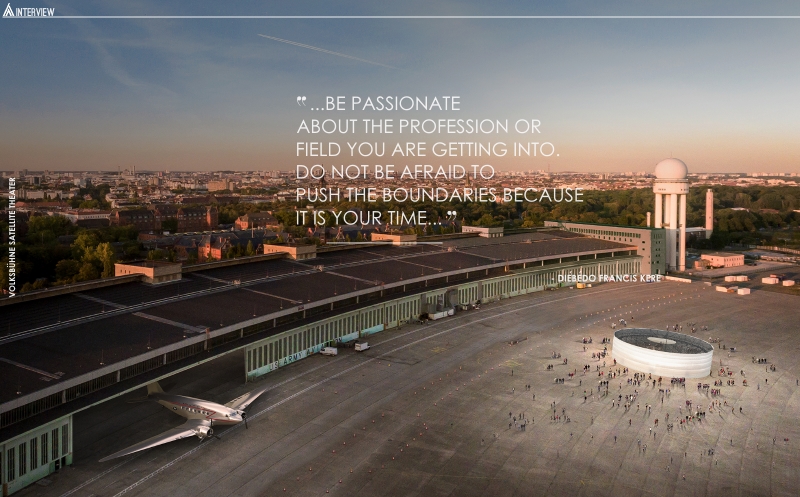
ASM: Are there inspirations, ideals or community forces from your culture that you hold on to as you work? How would you describe your personal creative style?
DFK: Building is a common experience in Burkina Faso that is done as a community and not individually. I adapted this principal because it helps people find the value in the structures being built and this aids in getting the each project going. It also helps the economy due to the condition of the people, by maximizing the use of cheaper resources. This is why I was able to build the first elementary school for $50,000; a feat that would not be possible today. I also believe in the principal of working together because it pushes back the fear, while simultaneously replacing the fear with confidence and pride. By working together, the project is better because as the saying goes, there is strength in numbers. The finished work carries the reflection of everyone who helped build the structures; and they appreciate the work put into the buildings because they see it as their idea. I would describe my work as a creation of space and structure that considers local realities. My style is an attempt to use natural materials and not push to integrate highly sophisticated materials in an area where no one can attain them. My style is about implicating the people by designing in a very simple way that they can understand. It makes it easier for them to be a part of the process as they learn in the process.
ASM: Are there lessons to be learned in building African structures from the West and vis-versa? Also, architecture is still a growing profession and process amongst the younger generation in Africa and parts of some of the other continents. What would you say to those who are considering getting into the field on a global scale?
DFK: Well, the Western structures are highly sophisticated in terms of what we call ‘space innovation,’ but I do not think I would want to apply what I am doing in Africa here in the West or vis versa; but I would say that there could be more public places where people could come together and share, which in turn encourages the idea of communality. For those who are considering my profession and other professions that are still developing in Africa and beyond, what I would say is be passionate about the profession or field you are getting into. Do your research about the profession and be open to new ideas. Do not be afraid to push the boundaries because it is your time.